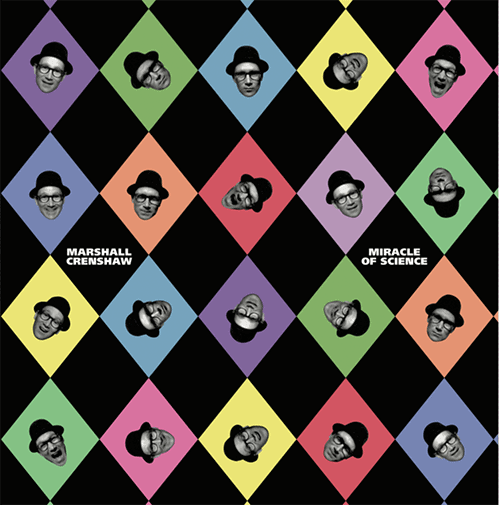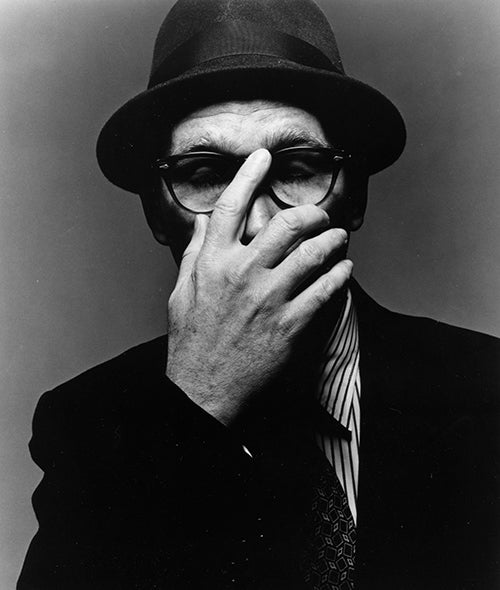Marshall Crenshaw’s career began in perhaps the most poetic of fashion – he played John Lennon in the Broadway musical Beatlemania. From there his career was propelled with a steady stream of pop-hook rock singles throughout the 1980s. The music was immediately approachable and stuck with you because of how masterfully constructed they were, right from the ground up. There were textures and subtle complexities that made songs like “Whenever You’re On My Mind,” “Cynical Girl” and perhaps his biggest hit, “Someday, Someway” more than just irresistible ear candy. They reflected the songwriting mastery of an artist whose talents and creativity would expand with each release.
Crenshaw found himself at Razor & Tie Records in the 1990s, and there, with artists like Joe Grushecky and the Houserockers, and Dar Williams, he was afforded the opportunity to really stretch his creative borders and make music on his own terms. This resulted in a series of records that he has begun to reissue on his own label, Shiny-Tone. He now is re-releasing 1997’s #447, an album of incredible dexterity and artistic daring. Long regarded among his finest work, #447 comes with two new singles that fit within the original tracks like proper soul mates. Wire to wire, it’s a stunning expression of Crenshaw’s abilities as a writer, musician, and arranger.
 Marshall Crenshaw, #447, album cover.
Marshall Crenshaw, #447, album cover.We caught up with Crenshaw during a late fall/early winter tour he was participating in with rock outfit The Smithereens. Standing in for the late lead singer Pat DiNizio, Crenshaw’s vocals fit perfectly with the band’s body of work and continue to demonstrate this artist’s broad collaborative capabilities. We talked about that experience and what it was like to revisit #447 and bring it forward once more to a broader audience.
Ray Chelstowski: How did you get to Razor & Tie after just one album with MCA?
Marshall Crenshaw: I got invited to participate in a multi-artist Arthur Alexander tribute album that they were going to put out. I went to the session and I just overdubbed a vocal, I don’t think that I even played guitar on it. The principals of the label were there, they introduced themselves to me, and we hit it off. That was it. It was a personal one-on-one situation and they expressed interest in working with me.
RC: How were you able to get back the rights to these Razor & Tie records and re-release them?
MC: It was really simple. I just happened to have [had] a really good lawyer at that time. He put a clause in the contract [stating] that everything would revert back to me later after a certain period of time. I didn’t ask him to do it, but I’m glad that he did.
RC: There’s a terrific 49-second-long rock jam, “Opening,” that opens the album. Was that always the plan or did it happen in the moment?
MC: No, it wasn’t spontaneous in terms of conception. But it did just sort of pop into my head, this little nonsense song that’s all about rock. As soon as I got the idea I set up one microphone and just played the drums and pulled it all up from there. I then asked this guy Paul Shapiro (tenor sax), who I haven’t seen since the session, to take the three tracks I gave him and go nuts, just fill them up. It’s a good track, right?
RC: You included an instrumental, “West of Bald Knob,” on the record. That seemed like a bit of a departure for you. What prompted that?
MC: Well, the first “album” album that I did for Razor & Tie was called Miracle of Science, and there was an instrumental tune on that album. That was the first time that I did [one]. All of these things, like the opening track and the instrumentals, are things that I wouldn’t have been allowed to do when I was at Warner Brothers and MCA Records. Or, I would have at least been discouraged to pursue them. But they just seemed like natural things to me. I grew up with 1950s and 1960s Top 40 radio and there were rock instrumental hit records back then, like Duane Eddy and the Ventures, all of that cool stuff that I loved. Whenever I wrote a song it always began as a piece of music with no lyrics. But there just happened to be this one particular instance where I couldn’t put any words to this melody that were at least “worthy” of the melody. Every word that I tried just didn’t track the song down. So, I decided to take the leap and make it an instrumental. I just kept doing it. I think that every record that I have done since includes at least one instrumental.
RC: You also worked here with world-class musicians like David Sancious (keyboardist for the E-Street Band), Bill Lloyd (guitars, Foster & Lloyd), and Greg Leisz (Ryan Adams, Eric Clapton, John Mayer, Jackson Browne and others). Did Razor & Tie also give you the freedom to recruit these types of players?
MC: Well you could say so, because their approach was completely hands-off. It was perfect for me and that allowed me to go about making the record however I liked. That’s one thing I’m really conscious of and thankful for. I know a lot of great people and have worked with a lot of great people, musicians and artists, that is. Razor & Tie didn’t have an A&R (artists & repertoire) department so I was off on my own, autonomous.
RC: You’ve said #447 is part of an album pair with Miracle Of Science. What do you think creates this bond?
MC: Well I was in a really good head space at that time and could really think clearly. It was a period when I could completely set my own agenda and was inspired and motivated. That’s kind of how that worked. Now with the passage of time, as I look back at my records I think of the first two, where I was also in a really good head space with a real sense of freedom and certainty about what I was doing. For my third fourth and fifth Warner Brothers albums it was a whole different world. After the second album we all realized that the relationship had gone into the ditch, to the degree that I actually politely asked to be released from my contract, but they wouldn’t do it. But those first two Warner records and the two Razor & Tie records are kind of pure in a way.
 Marshall Crenshaw, Miracle of Science, album cover.
Marshall Crenshaw, Miracle of Science, album cover.RC: The new songs fit perfectly into the track list. Did you write them with this album in mind or were they sitting on the shelf?
MC: Well, they are actually stand-alone singles in my mind. If you buy the vinyl you actually get a 45 rpm record inside the album cover that has the two new songs on it. I actually structured the licensing deal with MegaForce Records that it was incumbent upon me to deliver some new songs for the rerelease of the Razor & Tie records. I got some help on the song “Will of the Wind” from a guy named Greg Turner. I felt really inspired on that one. And “Santa Fe” is one of Greg’s songs that I always liked a lot. It was the first time that I had recorded anything in a long while and it was really a gas to do.
RC: In addition to the new songs, were there any other adjustments that you made to the record?
MC: There’s one little change I made on the album and it’s on a track called “Right There In Front Of Me.” At the end of the title I put the word “demo” in parentheses. It was a song that I didn’t write for myself to sing. I wrote it at the request of an A&R person who was developing a pop act, kind of like the band Hanson. It’s possible that they didn’t like it. It’s also possible that because I wrote it myself, the manager of the group wasn’t going to get any points on the song. That may be why they didn’t use it. At the time I just didn’t want it to go to waste so I put it on my album. I wasn’t really written for the album so that’s why I added the word “demo.”
RC: You seem to have toured regularly since the early nineties and your collection of live records is a testament to that commitment to the road. What’s next?
MC: In late spring there’s going to be a 40th anniversary re-issue of my first album, and I got back the copyrights to that one. I did a licensing deal for the Warner albums with Yep Roc Records. So, there’s that. And every year for almost nine years in a row I’ve done tour dates with the Bottle Rockets. They would start the show, then I’d come out and we’d play together. This helped form a real bond with those guys. But during lockdown, Brian Henneman, the leader of the band, decided that he liked staying home and wanted to do just that for the balance of his life. So, that seemed like the end of the band. But the three remaining members are still out there making music so I’m going to do some shows with them.
RC: You have been out doing dates with The Smithereens as their lead vocalist. That has to be fun!
MC: Oh absolutely! That’s exactly what it is. It’s fun. The social experience is really great; I like hanging around with those guys. We just played the other week and the other person who sings with them occasionally is Robin Wilson from the Gin Blossoms. At that show we were both on stage the entire time with each of us singing different songs in the set, and a few where we traded verses. It’s fun to play with a really great rock and roll band and [in] a situation where nothing is really my responsibility, which I really like. Though, I’ve got gigs of my own coming up, which helps me maintain a balance.
Header image courtesy of Tom Schierlitz.



